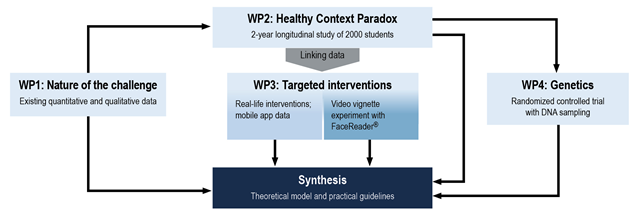About the project
Bullying in schools is widespread, with adverse effects on youth and high costs for societies. Research on bullying prevention has so far focused on average effects of anti-bullying programs and mainly concerned universal, preventive measures. While important, this has overshadowed attempts to uncover how exactly school personnel intervene in particular bullying cases and when and why that fails. CHALLENGE will open up new research horizons by shifting the focus from average program effects to the characteristics and conditions of youth who remain victimized or continue bullying despite targeted interventions. The next big questions in the field are tackled in four work packages:
- WP1 uncovers the key features of persistent bullying, such as the extent to which it is due to school-level factors or rather varies across bullying cases (within schools).
- WP2 elucidates the plight of persistent victims by testing why victimized youth are most maladjusted in contexts where the overall level of victimization is decreasing (healthy context paradox, Garandeau & Salmivalli, 2019).
- WP3 tests the student perceptions of, and the effectiveness of different targeted interventions in 1) real-life conditions and 2) in an experimental study utilizing video vignettes, uncovering challenge factors that increase the risk of a bullying case remaining unresolved. Moreover, it tests how youth characteristics affect their cognitive, emotional and motivational responses to different interventions.
- WP4 utilizes molecular genetics to test genetic susceptibility to intervention effects at the individual level.
CHALLENGE uses quantitative, qualitative, and DNA analyses, combines longitudinal and experimental designs, and harnesses novel tools to collect real-time intervention data and to register children’s responses to interventions. It bridges the perspectives of developmental and social psychology, child psychiatry, and genetics, builds theory on persistent bullying and enables the development of tailored measures for specific target groups where available interventions have failed.

CHALLENGE is part of the INVEST Research Flagship, which aims at increasing the well-being and skill development of children and youth.
